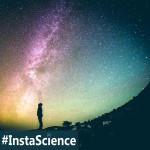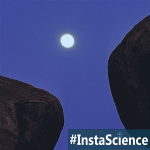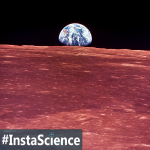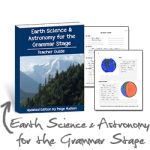What? You have never heard of Look up in the Sky Day? Well, neither had I until I made it a point to learn about strange holidays this year. Apparently Look up in the Sky Day is celebrated every April 14th and we are going to spend a bit of time tonight looking at the constellations. The Big Dipper is hands-down one of the easiest constellations to recognize in the night sky. It’s … [Read more...]
Blue Moon {InstaScience}
Did you know that a Blue Moon is not actually blue? And that there are two definitions for what a blue moon actually is? The more modern definition of a blue moon says that it only occurs when there are two full moons in a calendar month. Since a full moon occurs about every 29 days, it’s bound to happen. According to this definition, the next Blue Moon will occur in January of 2018. But … [Read more...]
Mars {InstaScience}
Mars is one of those planets that we can easily spot in the night sky, thanks to its red color! Mars gets its color from the iron oxide that is found on the planet's surface. Mars is the fourth planet from the sun, just after our planet, Earth. Like Earth, Mars has volcanoes, canyons, and polar ice caps. However, Mars is quite a bit drier and cooler than our planet. This planet is one of the … [Read more...]
Earth Science and Astronomy for the Grammar Stage Updates
I am so delighted to be sharing this bit of Elemental Science news with you! The brand new, fully updated version of Earth Science and Astronomy for the Grammar Stage is now available!!! As you know, we have been working hard on updating our grammar stage series of programs. Here is a look at what has been changed. THE UPDATED VERSION IN A NUTSHELL The updated version of Earth Science and … [Read more...]
Homeschool Science Corner: Teaching about the Solar System
Welcome back to the bi-weekly homeschool Science Corner! This week I want to share with you some activities to help you as you teach your students about the solar system. What is the Solar System? Our solar system is the collection of planets and other objects that orbit around the sun. It includes the eight major planets Mercury, Venus, Earth, Mars, Jupiter, Saturn, Uranus, and Neptune. It … [Read more...]
 Sign up below to receive weekly tips & tools for homeschool science and we'll send you a FREE copy of
Sign up below to receive weekly tips & tools for homeschool science and we'll send you a FREE copy of 



